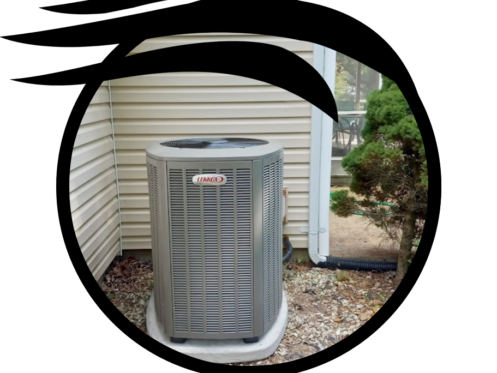Controlling your home’s humidity is important for preventing damage and other issues. Humidity levels can also directly impact indoor air quality, and this is one area where an air purifier may be able to help as it will quickly boost air quality. Today, we’ll tell you all you need to know about air purifiers and whether they affect humidity. We will also lay out other options you have for controlling humidity and improving the air quality in your home.
How Whole-Home Air Purifiers Work
Whole-home air purification systems and whole-home air filters are by far the best options for overcoming issues with indoor air pollution and improving your home’s air quality. There are a variety of different options available, but they all essentially work by filtering the air to remove the majority of airborne particles. These systems are effective for eliminating dust, pet dander, pollen, mold spores, and other allergens as well as many pollutants and chemical contaminants including some volatile organic compounds (VOCs).
The thing you need to understand, however, is that improving indoor air quality isn’t just about filtering the air and removing allergens and pollutants. Managing the home’s humidity level is also important for preventing air quality issues and improving your home comfort. Unfortunately, this is the one area where air purifiers aren’t any help as they will have no effect on the humidity level in your home. The good news is that there are a few options that will make a major difference in terms of your home’s humidity level, which we’ll look at in the next sections.
Controlling Humidity With a Whole-Home Humidifier or Dehumidifier
Whole-home humidifiers and dehumidifiers will always be the most effective options for preventing high humidity during the warmer months and keeping the air in your home less dry during the winter. High summertime humidity can be a major issue in the St. Louis area. Although running your air conditioning does help to dry out the air, your AC alone may not be sufficient for controlling moisture on extremely humid, muggy days. Any time the humidity level inside your home is high, you may start having condensation form on your walls or inside your ducts. The condensation can quickly lead to major issues with mold and mildew that can both damage your home and worsen indoor air quality.
Whole-home dehumidifiers can easily prevent these issues as they are capable of capturing a huge amount of moisture per day so your home’s humidity level is never too high. This type of unit will also help keep your home feeling more comfortable since moist air will always make you feel warmer. A whole-home humidifier will also help your air conditioner work more effectively and can even lower your electricity bills.
Dry air is also a common issue in the winter. Colder air always feels drier and contains less moisture, and your heating system also sucks moisture out of the air as it runs. Depending on the type of furnace you have, it may also pull some cold air in from outside through various parts of the house so that the air in your home is even drier. Whenever the air is overly dry, the air essentially sucks moisture out of everything else. This is why your skin, lips, and hair are often dry in the winter. Low humidity will also cause your nose, throat, and sinuses to dry out and make it harder for you to breathe comfortably. The moisture can even get sucked out of any wood and leather, which can damage your furniture and cause it to warp or crack.
A whole-home humidifier is an easy way to improve your comfort and prevent your home from feeling dry all winter. There are several different types of humidifiers available, and all of them work to add moisture to the hot air as it flows through your heating system. When your furnace is running, the heating system will then move the moist, hot air into every part of the home so that your whole house feels more comfortable and you can breathe more easily.
How Mechanical Ventilation Can Improve Air Quality and Manage Humidity
Mechanical air ventilation systems like a heat recovery ventilator or an energy recovery ventilator are also great options for improving indoor air quality and keeping your home smelling fresh and clean. Most newer homes are extremely energy efficient and have a fully sealed exterior envelope with almost zero air leaks or gaps. While this is great for comfort and keeping energy costs lower, it can present some problems in terms of air quality and temperature control.
Older homes are said to “breathe,” which essentially means they have lots of gaps in the structure where stale air can escape and fresh air can get inside. Newer homes typically need a mechanical ventilation system since the sealed envelope traps air inside and keeps air from outside leaking in. This leads to the air quickly becoming stale and also causes the concentration of indoor pollutants to continually increase. When the air is trapped inside, the humidity level in the home will also rise simply because people give off lots of heat and moisture.
Mechanical ventilation systems help to overcome these issues as they work to pull fresh, clean air in from outside while also drawing the stale, polluted air out of the home. The important thing to understand about energy recovery and heat recovery ventilators is that they don’t just directly pull air in from outside and blow it into the building. If they did, they would pull in lots of cold air during the winter and hot air during the summer causing your comfort to suffer and your energy bills to increase.
Instead, these units capture heat from either the incoming or outgoing air and transfer the heat to the other air stream. During the hotter months when you have the AC running, the ventilator will remove heat from the air coming into the house and transfer it to the air being drawn out of the house. The unit will then work in the opposite direction in the winter. It will capture heat from the air being drawn out and use it to raise the temperature of the incoming air.
Energy recovery ventilators are usually the better option for humid climates. Heat recovery ventilators can only transfer heat between the streams, but energy recovery ventilators can also capture humidity. This means the unit will pull moisture out of the air it draws into the house so that the incoming air is drier and the humidity level in the home doesn’t increase.
St. Louis’ Indoor Air Quality Professionals
Agers Heating & Air Conditioning has been serving customers in Saint Peters and the Greater St. Louis area for nearly 20 years, and we are the area’s top choice for indoor air quality services. We offer a wide range of indoor air quality solutions including air purifiers, humidifiers and dehumidifiers, air cleaners, and ventilation systems, and we can also install and service all types of air quality equipment. If you’re looking to boost your air quality and overcome humidity issues or you need any heating or AC service, give us a call today.




